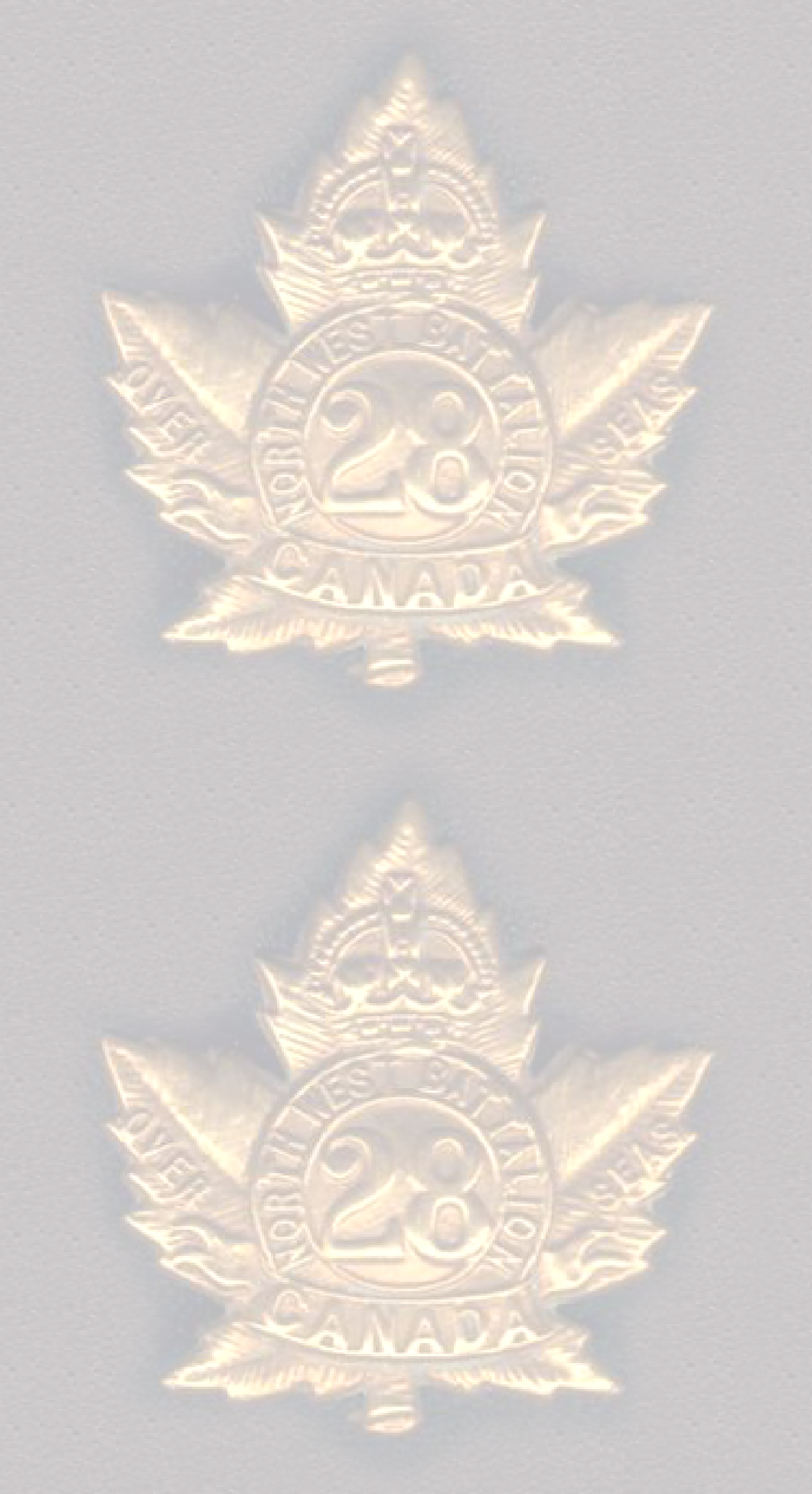
The War Diary of Lieutenant William L Hayes M C
1915—1919
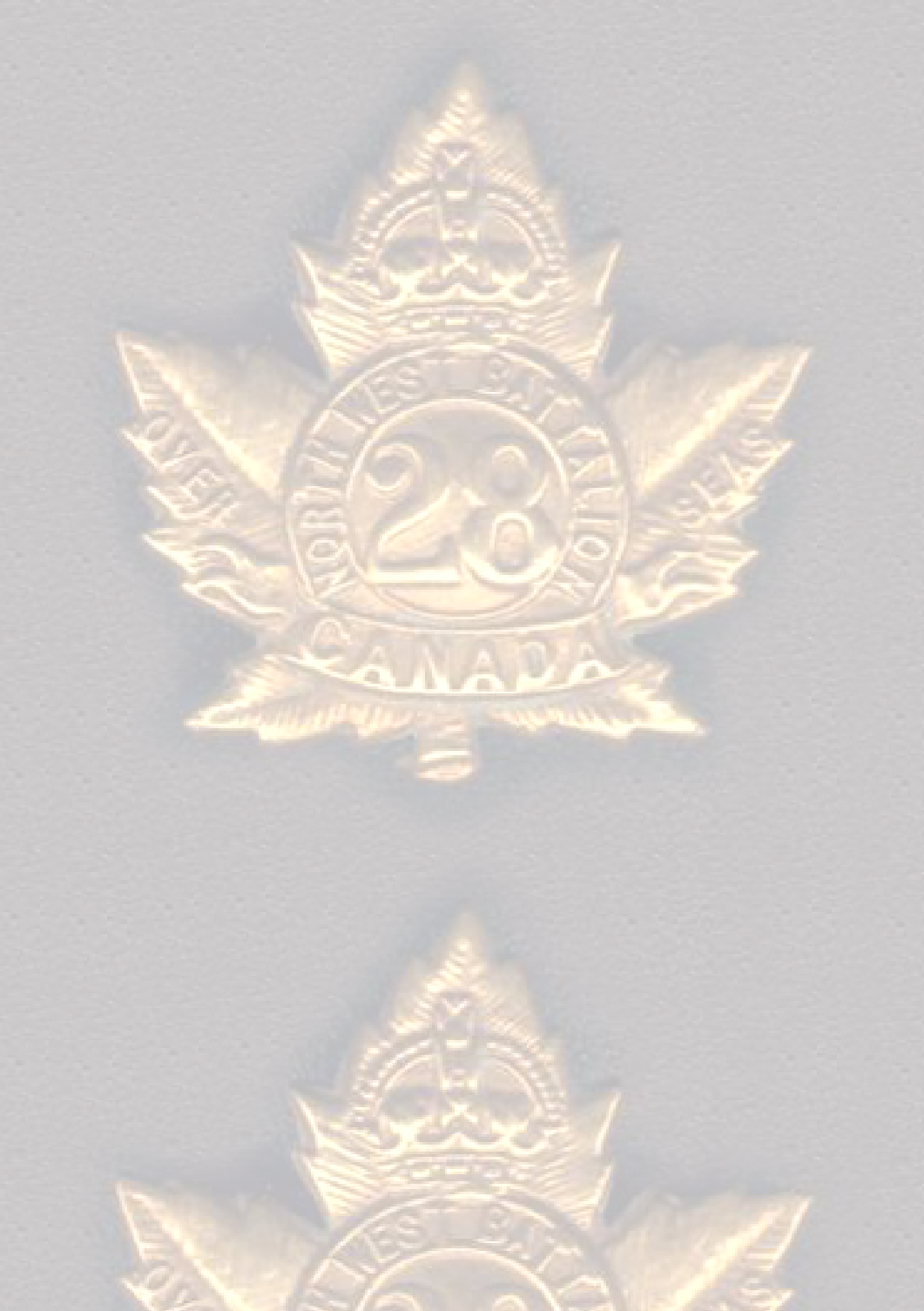
For the first time, all four Canadian Divisions acted together. There were no reserves, except what could be made up from within the divisions themselves. There would be no reinforcements and no support afterwards. The objective was to capture the whole of Vimy Ridge and the escarpment beyond. Objective Lines were drawn along the ridge and Divisions were expected to reach these in given times. They were labelled as the Black line, then the Red Line (the old German Zwischen-
The divisions were aligned along the lower western slopes as follows: 4th Div at the NW end on a 1950 yard frontage with 1000 yards to take. The terrain, Hill 145, was more difficult here and they would stop at the Red Line. The 3rd Division on its right had a 1400 yard front and an expected advance of 1800 yards to the Red Line, taking a small section of the Blue Line on the right. The 2nd Division on the right of the 3rd had a front of 1400 yards which widened to 2000 yards. It had to take 3000 yards into the enemy defences. It was expected also to capture the towns of Farbus and Thelus. The 1st Division on the right of the 2nd had a frontage of 1800 yards that narrowed to 850 yards but had an advance of 4000 yards across the southern end of the slope. British troops supported various flanks particularly on the south edge. The initial attack used about 40,000 infantry men plus all the associate supports, over 97,000 in total.
Two Brigades from each of the 1st and 2nd Division would take the first two lines and then the third Brigade would advance and take the next two. The 6th Infantry Brigade was in this second wave of the 2nd Division’s advance.
Zero Hour was 5:30 am and most of the Ridge was in Canadian hands (except in the north) by about 11 am. (See McIntyre, Canada at Vimy, pp 94, 95) An astonishing feat!
1917 The Battle of Vimy Ridge
WLH/D Coy: Training in several areas, Bubure, Mont St Eloy (not the St Eloi in Belgium March/Apr 1916), Ecoivres, Grand Servins. Ecurie was the front line 25 Feb 1 Mar (28 Feb Trench raid D Coy behind left sector)
24/25 March D Coy to Zivy Cave, holding the line while other Bgds completed final training. A Brigade, or at the very least a Battalion, was kept in the front line to give the impression that it was ‘war as usual’ to the enemy.
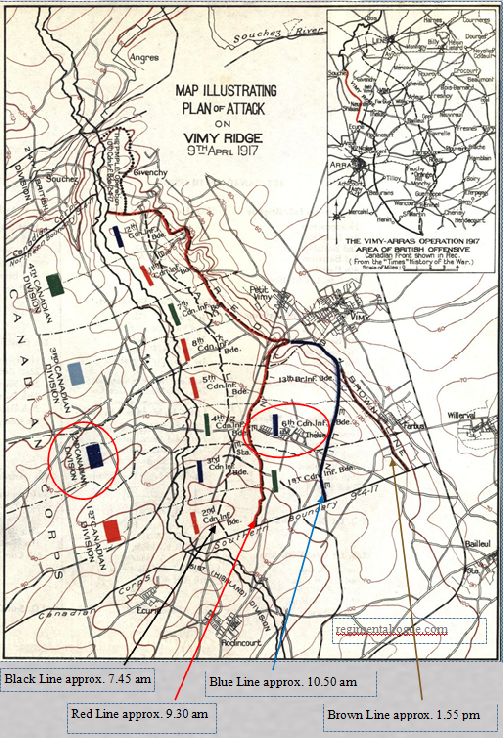
The Creeping Barrage. Used with some success at the Somme, this artillery barrage was modified and perfected for use here. It was a continual curtain of artillery being fired from behind the lines in a high arc over the heads of the attacking infantry for 3 — 6 minutes and moving forward 100 yards pausing with continual fire, advancing and repeating the process until it reached the Black line. Here it would pause and 200 yards further on continue a bombardment for 40 minutes. The infantry needed steady nerves and strong discipline to walk behind this curtain and attack anything in the revealed enemy trenches. 1.6 million shells were allotted. The skill of the artillery that was required cannot be over dramatized. In many cases the firing, especially at the southern end, was done onto areas out of sight of the guns. It was choreographed to the minute and done by mathematics alone. The map below shows the programmed artillery advancement from left to right, up the slope.
The infantry attack consisted of advancing troops followed by platoons of ‘moppers-
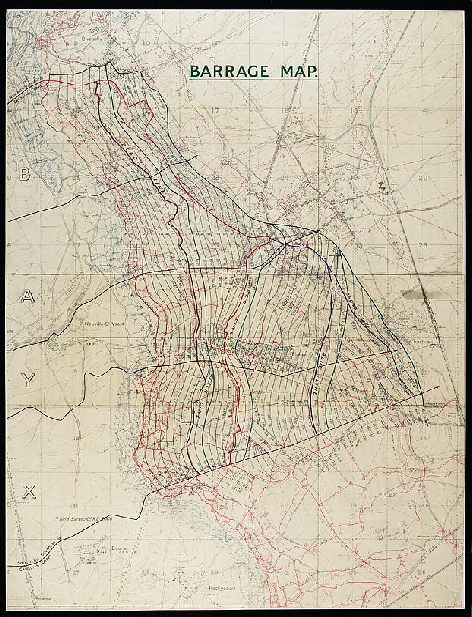
The Germans could have had no doubt that something was about to happen, but they did not respond adequately. There had been aeroplanes (from both sides) over the site with associated photographic reconnaissance for weeks. Trench raids, prisoners and deserters, troop movements and a marked increase in activity indicated that something was planned. The advance bombardment beginning on 20 March also gave limited warning.
Canadian planners, while careful about information falling into the wrong hands, knew that it would be impossible to maintain complete secrecy, with the exception of one thing: the moment of the attack.
That moment was 5.30 am Easter Monday in driving rain and snow.
28th Bn War Diary 9 April ‘All Companies in position in Assembly Trenches at 3:15 a.m. Artillery opened up a few minutes before 5:30 a.m. when Infantry attack commenced.’ Some were standing knee deep in mud under snow and sleet.
7.55 a.m. Battalion moved to main Arras-
8.05 a.m. leading battalions (including 28th in centre) moved forward. In continued snow and sleet reaching the Arras-
10.10 a.m. Battalions moved on. ‘D Company 28th….having ‘leap frogged’ their leading Companies (which had been left to complete the mopping up of the Western Section of the village) had also secured the Centre Section of Thelus Village…’ 6th IB WD
11.10 a.m. the Blue Objective was reached. The Barrage was kept stationary at the Blue Line for 1 hour and 24 minutes. (6th IB WD) Towards the Brown line they encountered heavy wire.
1.55 Brown Line taken. Barrage moved forward another 150 years east.
2.30 p.m. Barrage ceased. ‘The 28th Bn… which had captured the village of Thelus and Blue Objective had progressed most favourably with their consolidation of the Main Resistance Line and the 2 strong points in rear of it.
28th Bn War Diary Bn Order No 162. Once in position, ‘The 6th Brigade will have the BLUE LINE.. From TAX TRENCH to TELEGRAPHEN WEG...as their objective..’ then the first phase for ‘D Coy: THELUS Trench, inclusive to CEMETERY Road’. ‘D Company will follow 75 yards behind “B” Company and pass through, passing under the barrage 40 yards in front of THELUS Trench. On the barrage lifting the trench is rushed and as soon as the moppers-
‘The second phase for D Coy will be the reopening of TELEGRAPHEN WEG and TANGO TRENCH. Once achieved, a report centre will be set up in the vicinity of the CRUCIFIX.’
The Battalion was relieved by part of the 20th Battalion at 3.35 am on 11 April.
Further information: Search for Canada at Vimy Ridge
The attack began with an
artillery attack on 20 March
which continued for days and
was more or less constant. The purpose of this was to weaken enemy morale and to destroy their fortifications and supply lines and also to destroy their barbed wire defences. But it was also done to keep them on the Ridge and not give them the opportunity to retreat.
Artillery had been borrowed from several parts of the British Army along with every piece that the Canadian Army had available. It was such a large group that it was the equivalent of one heavy gun for every 18 metres (20 yds) and one field gun for every 9.1 metres (10 yds) of the entire Canadian front line. The massed guns were three times the number of heavy guns used at the Somme.
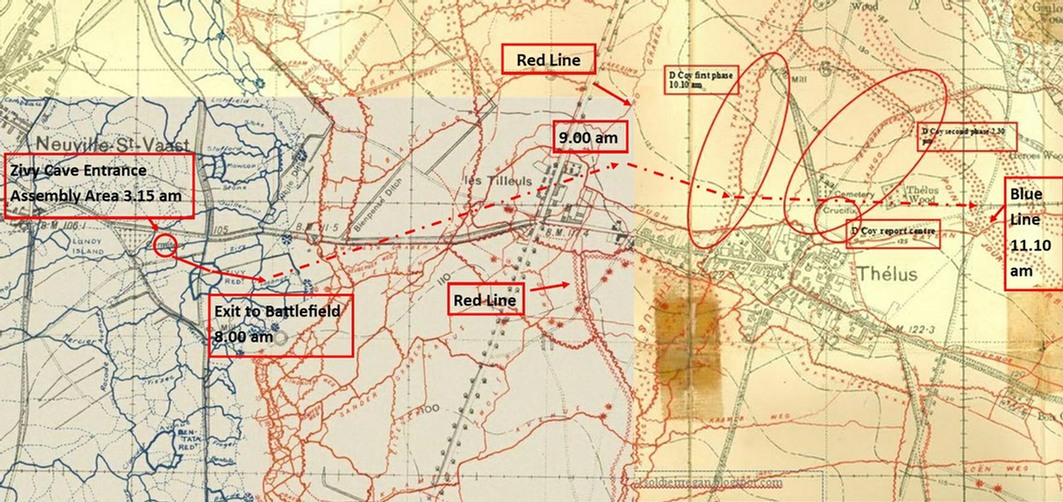
The route of D Company across the lower end of the battlefield.